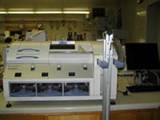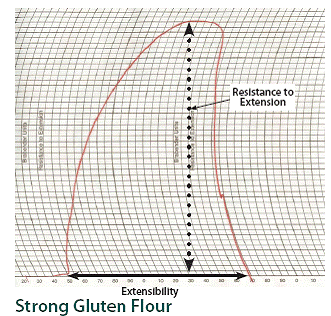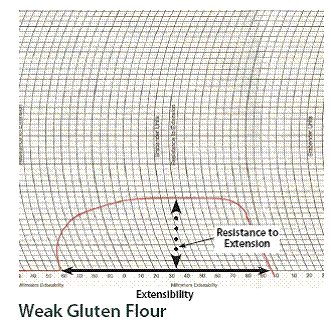Extensograph
We have one extensograph in our facilities.
The extensograph is designed to measure the balance of the elastic and viscous properties of dough, as shown on the next page. The curve gives a measure of the resistance to extension and the extensibility of the dough. Dough is mixed in the farinograph, rounded, and molded into a cylinder. The cylinder of dough is placed in the extensigraph cradle and allowed to rest. At the end of the rest period the cradle containing the dough is placed in the instrument and the dough is stretched at a constant rate with a hook. The height of the resulting curve is related to the dough’s resistance-to-extension. The distance the dough is stretched before it fails is the extensibility of the dough. Generally for bread making a balance of these two factors is desirable. The procedure calls for stretching the dough after rest times of 45, 90 and 135 minutes.


Information source: "Wheat and Flour Testing Methods: A Guide to Understanding Wheat and Flour Quality: Version 2"
